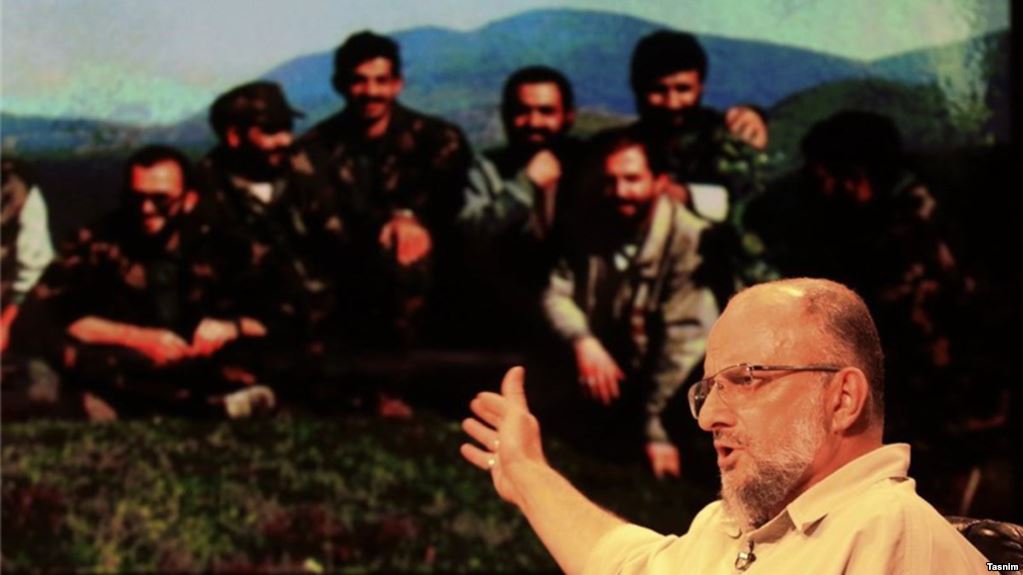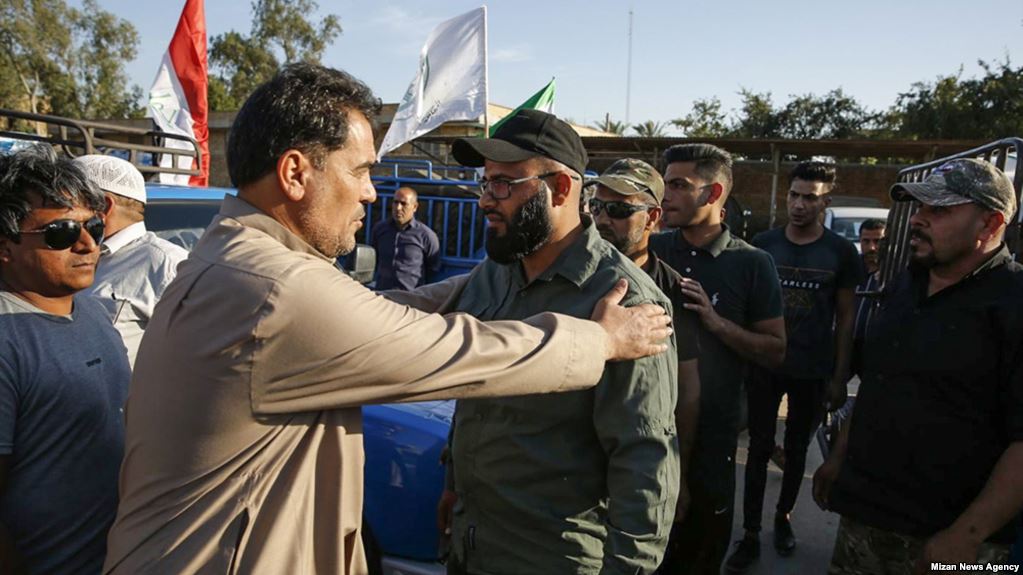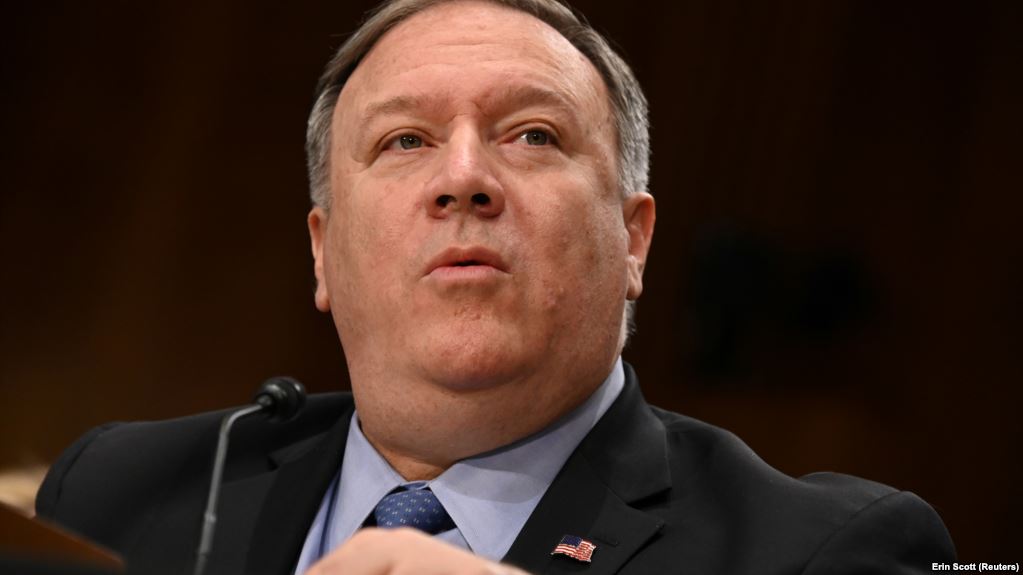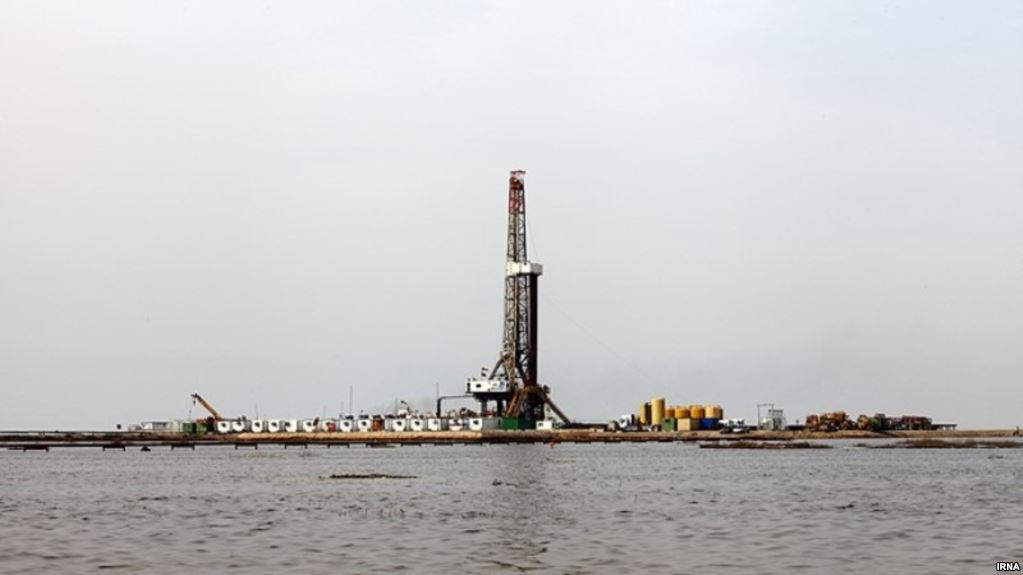
With or without Trump
The editorial of Hamdeli newspaper focuses on the US 2020 presidential elections, and its significance for Iran’s foreign policy.
The 2020 US presidential election can be a turning point in the Islamic Republic’s foreign policy. There are two approaches towards Iran in US foreign policy. The first approach holds that the Islamic Republic cannot be reformed; it has defined its identity and nature against the US; the Iranian people are highly dissatisfied; the US strategy must be to eliminate the Iranian establishment in any possible way (elimination strategy).
The second approach holds that the Islamic Republic can be reformed, its values can gradually change; with pressure on the establishment, its behaviors can be controlled; with imposing sanctions, the necessary opportunity can be created for bolstering “reformist” movements within Iran (strategy of changing behavior).
While Donald Trump represents the first approach, Barrack Obama stood for the second one. Most Republicans back the first approach; a majority of Democrats support the second one. The approaches of the former President George Bush and Trump towards Iran are different because of their different personalities and their varying levels of experience.
With the designation of the IRGC as a terrorist group by Trump’s administration, the level of resentment and hostility between the two countries has reached its highest, since the hostage crisis in Iran, in which American diplomats and citizens were taken as hostages for 444 days.
Experts hold that during the past three years, Trump has used all his presidential capacities to advance his plans and policies, particularly against Iran. It seems that Trump has decided to take the case of the Islamic Republic to a different phase after 40 years since the Islamic Revolution.
It can be predicted that before the upcoming US presidential elections in 2020, Trump will follow his policy of creating tension between Iran, regional countries and Europe. Meanwhile, many politicians of the Islamic Republic hope that in the 2020 US presidential elections, Trump will not be elected for a second term, and one of his Democrat rivals will be elected to the White House instead.
Hamdeli – April 17
Intensification of inflationary recession
The editorial of Jahan Sanat focuses on the prospect of Iran’s economy, given the increasing US sanctions against Iran.
With a possible decrease in oil exports and growing difficulties in importing the raw materials required for its industry due to the US sanctions, it will be more likely Iran will face recession during the current Iranian year (starting from March 21). The main root is in over-dependence of the industrial sector on importing raw materials, which prevents the chain of production from fully forming in the country.
Along with the pressures of the US sanctions, importing raw materials has created a lot of difficulties for the industrial sector, and it is likely the difficulties will increase as the sanctions intensify. Moreover, the recent floods in Iran that destroyed a large part of its agricultural lands can have a negative impact on the economy, ending in a severe drop in agricultural output, at least for the first three months of the year.
A severe decrease in economic investments, along with a negative prospect for the upcoming year, can result in a substantial drop in production. As a result, the economic conditions for the upcoming year will be similar to last year, which means that the economy will face an inflationary recession.
As such, domestic performance and decisions can prevent the situation from worsening by absorbing the negative shocks. Accordingly, under such conditions, only adopting correct economic policies can prevent a severe drop in production and a considerable growth in the inflation rate.
Jahan Sanat – April 15
Conditions for resistance!
The editorial of Mostaghel newspaper deals with the expectations and demands that the Iranian people have if they are asked to go through the tough conditions imposed on them due to the US sanctions, as well as the recent floods.
There has been an unprecedented devastating flood which might even continue. There were a lot of damages to houses, roads, farms, schools, and government centers. Evidently, at the time of the US sanctions, such damages will put a lot of pressure on the country’s budget, and eventually, it will be the people who will suffer, and livelihoods will become much tougher for them.
It seems that the US seeks to make its sanctions effective so that the Iranian establishment surrenders to the wishes of the White House or to the Iranian people who are in a dire situation and are prepared to rebel against the establishment.
If under all these pressures, Iranians are asked by the establishment not to surrender to US demands, they must be convinced that it is the only way.
People naturally expect that if there is any pressure, it should be equally divided among all. It makes no sense that people are increasingly under pressure for their livelihoods, while some people use the public budget for their own advantage to send their children to study in America and Europe with their expenses being paid by the country.
People who are going to go through hardship must be respected, and their views and interests with regard to their own destiny must be taken into account. The country must be run as the people deem fit. When people vote and then suddenly their votes become useless, then they won’t have any motivation to endure and make sacrifices. The respectful, forgiving people will endure and defend their own greatness. Humiliated people, on the other hand, will not stand up and resist.
Mostaghel – April 14
Is direct military confrontation between Iran and the US possible?
Designating the IRGC as a foreign terrorist organization by the US administration has military, political, economic, and psychological dimensions. The editorial of Arman Emrooz examines these dimensions, speculating on the possibility of a direct military confrontation between the two countries.
As for the psychological dimension of this move, Trump’s administration and the US political team aim to impact the people inside Iran. They seek to put pressure on Iranian minds, thus forcing the government to make concessions.
As for the economy, the United States is looking for ways to increase pressures on the Islamic Republic, as it has already failed in decreasing Iran’s oil exports to zero. Given the main role of the IRGC in Iran’s economy, the US measure can even impact INSTEX. Aftershocks of the US move soon appeared. The European Troika that has announced its disagreement with the designation of the IRGC as a terrorist organization is now afraid of the relationship of their companies with institutions and private companies that have ties to the IRGC, as it is looking for ways to stay safe from US sanctions.
In the military and security field, the US move has more manifestations. With the designation of the IRGC as a terrorist organization by Washington and Tehran’s reaction in labeling the US forces in western Asia as terrorists, the possibility of a limited confrontation between these two forces increases. The fact that the European countries have particularly asked for restraints on both sides shows that the issue of war has been raised and they are afraid of it.
Apart from the issue of a direct war between Iran and America, the possible confrontation of Israeli forces with the IRGC in Syria is another issue that must be taken into account. The designation of the IRGC as a terrorist organization will increase the conflicts in Syria.
Arman Emrooz – April 14

Has the IRGC used the Red Crescent as a cover?

Releasing the footage of an interview of Saeed Ghassemi, a former commander of the IRGC, has created problems for Iran’s Red Crescent Society. In the interview, he says that during the Bosnian war from 1992 to 1995, he had gone to Bosnia as a military man but under the cover of the Red Crescent to give military training to the mujahedeen. Ghassemi has urged that at that time, they had cooperated with Al Qaeda forces, and Al Qaeda forces adopted their style.
In reaction to the footage, the Iranian Red Crescent Society announced that they will file a lawsuit against Saeed Ghassemi for his remarks about ‘taking advantage of this organization’ for military purposes during the Bosnian war. The Red Crescent has urged that this society will never allow the military forces to use its emblem or uniform; if any such thing has ever happened, it must have been without coordination with them.
The IRGC spokesperson Brigadier-General Ramazan Sharif, too, reacted to Saeed Ghassemi’s remarks, calling them a personal opinion, lacking credibility, and not confirmed by the IRGC.
Apart from the legal aspects and the nature of the Red Crescent Society’s activities, this issue gains significance particularly with regard to recent controversies about difficulties in sending international financial aid to this entity after the recent floods in Iran. Under such conditions, the claim of deploying military forces under the cover of the Red Crescent can seriously endanger the legal and international status and credibility of this entity.
Iran participated in the Bosnian war through the IRGC forces and Lebanese Hezbollah. Ahmad Janati, as representative of the Iranian Supreme Leader Ayatollah Khamenei, was in charge of issues related to Iran’s presence there. Nader Talebzadeh and Saeed Ghassemi were too well-known figures who cooperated with Janati in this regard.
It isn’t unprecedented to accuse Iran of carrying out military and security activities under the cover of the Red Crescent Society. In 2009, the Yemeni government closed two health clinics under Iran’s Red Crescent Society, accusing Iran of backing the Houthi rebels. In 2015, too, Yemeni officials alleged that Iran had sent arms for the Houthi rebels under the cover of the Red Crescent’s aid.
Radio Farda
Radio Zamaneh
IRGC commanders ousted from Instagram

A number of the IRGC commanders no longer have access to their Instagram accounts. This happened a few hours after the United States officially designated the IRGC as a foreign terrorist organization in a notice published in the U.S. Federal Register on April 15.
The first page which became unavailable on Instagram in this regard belonged to the Commander of the IRGC’s Quds Force Qasem Soleimani who had more than 700 thousand followers.
Afterward, the IRGC’s Commander-in-Chief Major General Mohammad Ali Jafari lost access to his Instagram page.
The Instagram page of Brigadier General Mohammad Pakpour, IRGC Ground Forces Commander, also has become unavailable. It should be added that the IRGC itself has lost its official page on that social networking service as well.
Moreover, a number of Iranian army commanders’ pages are currently down on Instagram, including the Chief of Staff for the Armed Forces Major General Mohammad Bagheri and the Chief Conscription Officer at the Armed Forces General Moussa Kamali.
Instagram has also blocked the account of Mohammad Bagher Ghalibaf, a former commander of the IRGC Air Force and Iran’s Police Chief, who currently serves as a member of the Expediency Council.
According to Iranian media, the Instagram accounts of Iran’s Chief Justice Ebrahim Raisi and Ali Akbar Velayati, Ali Khamenei’s senior adviser, have become inaccessible as well.
Following these measures by Instagram against Iranian military and political officials, there are rumors about a plan to filter this social networking service in Iran. In reaction to shutting down the accounts of a number of IRGC commanders by Instagram, Hossein Allah Karam, head of Ansar-e Hezbollah and a former IRGC commander, called for filtering this service in Iran.
BBC Persian
Radio Zamaneh
Iraqi militias, Lebanese youth enter Iran’s flood-stricken areas

Jamal Shakarami, the IRGC commander in the Ilam province, announced a “large convoy” of Iraqi armed militias has entered Iran’s flood-hit regions. 50 vehicles carrying Al-Nojaba and Hashd al-Shaabi forces arrived in Iran via the Mehran border, he added.
Shakarami noted those convoys would be “providing flood relief” to people in the Khuzestan and Lorestan provinces.
Hashd al-Shaabi, founded by the IRGC, was invited to Iran by the IRGC’s Quds Commander Qasem Soleimani, according to Kayhan daily. Kayhan also reported that Afghan Fatemiyoun militias have arrived in the Khuzestan province.
Later the representative of Lebanese Hezbollah in the Iranian City of Qom announced that a considerable number of Lebanese youth are present in flood-stricken areas of Iran.
Meanwhile, the presence of these foreign forces in Iran has provoked waves of criticism and questions from people in social media. Some people hold that Hashd al-Shaabi forces have come to Iran to suppress any protests against the Islamic Republic’s establishment.
Some social media users also called Hashd al-Shaabi a “Fascist” group and “mercenaries” whose mission is to kill Iranians.
Moreover, Reza Pahlavi, son of Iran’s former Shah, wrote on his Twitter account that the “Hashd al-Shaabi mercenaries were brought to Iran only to quash Iranians and to suppress the afflicted, homeless people of Khuzestan and Lorestan.”
Following the deadly floods in Iran, there were reports on social media and footages on YouTube showing IRGC forces putting people under pressure to evacuate their homes in flood-stricken areas.
Afterward, the IRGC spokesperson denied that its forces “confronted” people, calling it “rumors spread by the hostile, anti-revolutionary media.” Ramazan Sharif stressed that IRGC forces only talked to people to convince them to leave places where their lives were at risk.
In the meantime, Iran’s security forces raided a rescue center in Ahvaz, arresting more than 25 Ahvazi Arabs and transferring them to an unknown location. The rescue center was active in helping flood-stricken people in southern Iran.
Radio Farda
BBC Persian
Pompeo: Iranians are suffering, but their dollars are spent to back Madura

The US Secretary of State Mike Pompeo pointed to the recent floods in Iran, saying Iran’s leadership ‘spends its dollars on backing Venezuela’s President Nicolas Madura, while Iranian people are suffering inside the country’. Pompeo accused the Islamic Republic of ignoring the needs of those afflicted by the recent floods, stressing that there has been a huge flood in Iran, but the Iranian leadership is busy exporting terrorism.
Pompeo mentioned that Iran intends to impact the lives of people in Venezuela, urging that ‘we are responsible for reducing this danger’.
Tehran, along with Moscow, is among the few supporters of Nicolas Madura in Venezuela. Juan Guaido, leader of the opposition forces, has challenged Madura. Guaido is backed by the US and 50 other countries.
The US administration holds that the Islamic Republic intends to use its close ties with Latin American governments, to finance Madura and to bolster Lebanese Hezbollah’s cells in Venezuela.
Since the former President Mahmoud Ahmadinejad’s government, the Islamic Republic has developed a relationship with South American governments without any strategic plans or any comprehensive economic and political goals.
Despite the financial issues after the US imposing sanctions against Iran during the last year and the problems in transferring money, the Islamic Republic seems to be bent on repeating measures that were taken in Syria to save Assad’s regime in order to preserve Madura’s government in Caracas.
It seems that Tehran’s religious regime has got the green light from Russia to become involved in a very costly project, without taking into account the differences in the current crisis in Venezuela with that of Syria.
Radio Farda
Kayhan London
Flood-hit oil and petrochemical industries in Iran

It is reported that as a result of the recent floods in Iran, the production of two oil fields and several petrochemical complexes have come to a halt.
Karim Zobeidi, the oil minister’s deputy in the Khuzestan province, announced that the Abteymour oil field and Ahvaz Unit 3 have been shut down. According to official reports of the oil ministry, Abteymour’s production is 65,000 bpd. There has been no report as to the amount of production in Unit 3.
According to the Iranian interior minister, 90% of Hor al-Azim is filled with water, and part of the water pours into Hor al-Azim in Iraq. Some of Iran’s oil fields are located in Hor al-Azim.
Meanwhile, according to Fars News Agency, the activities of several petrochemical complexes in western Iran have stopped due to damages caused by the recent floods. Currently, five petrochemical complexes of Kavian, Kermanshah Polymer, Lorestan Petrochemical, Mahabad Petrochemical, Kurdistan Petrochemical have ceased their activities.
Iran’s Oil Minister Bijan Zanganeh has announced that the damages caused by the recent floods to Iran’s oil facilities are estimated at 1000 billion tomans. Expressing concerns over the conditions of Iran’s oil facilities and pipes, he urged that he has repeatedly announced that the oil facilities are exhausted. Zanganeh continued that Ahvaz is full of oil pipes, adding ‘there is no place in danger as Ahvaz is — a thought that wouldn’t let me sleep at night’.
According to Zanganeh, another priority for the oil ministry is to prevent oil pollution from entering the flood-stricken areas and to protect these areas environmentally, as otherwise, it would create more problems for people living there.
Radio Farda
